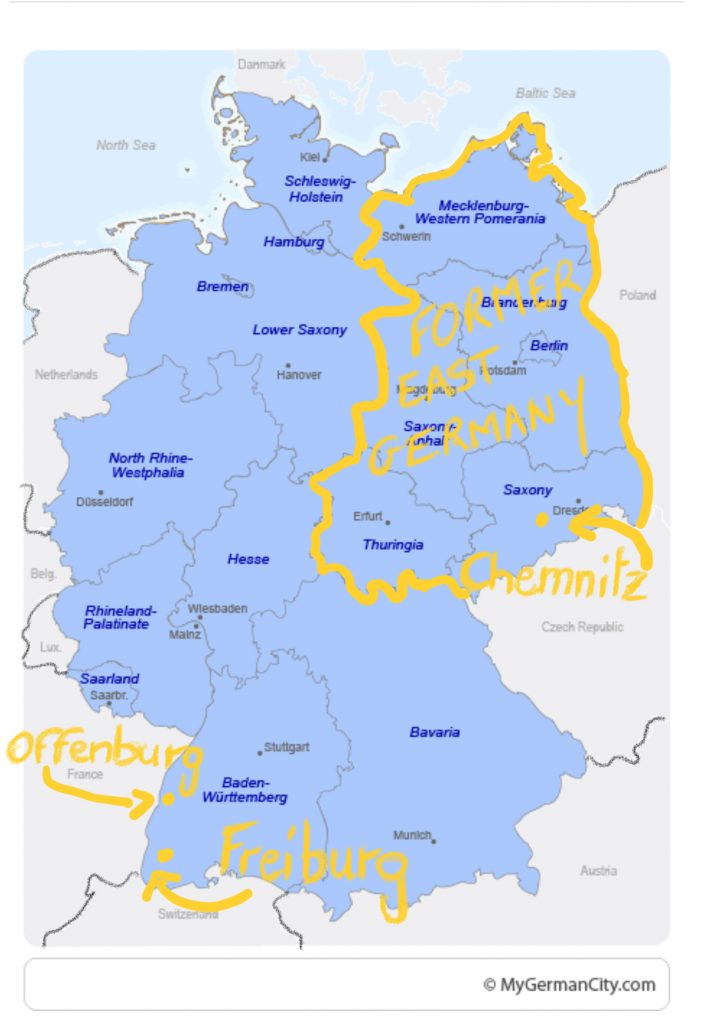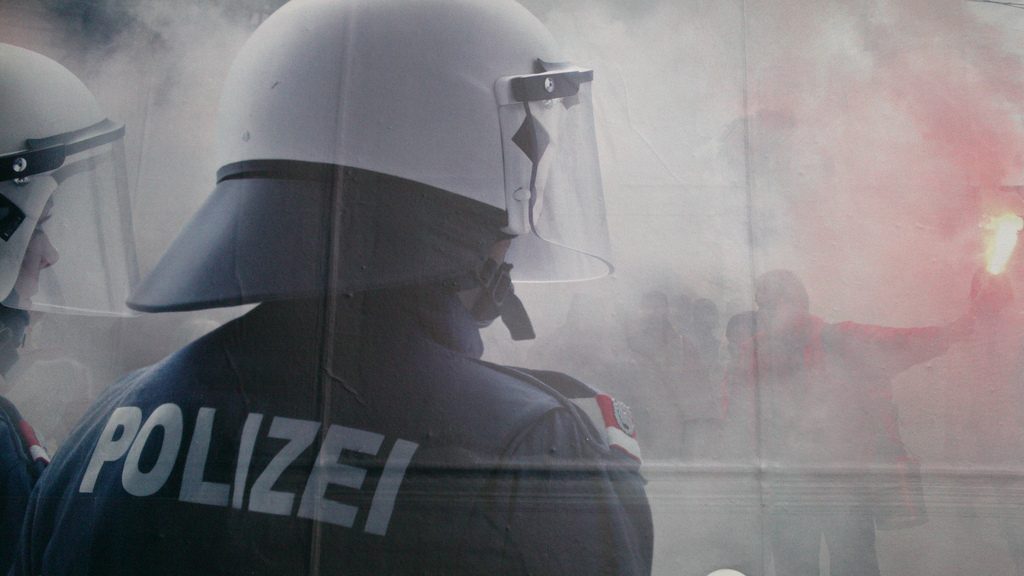 Following the riots in East Germany last month, many are wondering if Ugly Germans are really back. They are not, but the rise of right-wing populism in Germany is worrisome.
Following the riots in East Germany last month, many are wondering if Ugly Germans are really back. They are not, but the rise of right-wing populism in Germany is worrisome.
At the end of August 2018, the news of anti-immigrant protests in Eastern Germany had spread all over the world. Hours after two refugees stabbed a 35-year old Cuban-German, 600 far-right supporters marched through the city of Chemnitz. One day later, several thousand right-wingers gathered, chanting threats toward foreigners. Pictures of protestors giving Hitler salutes were widely spread through the media outlets. Is the ugly German really back?
Are the ugly Germans really back?
No, they are not.
Chemnitz doesn’t speak for all of Germany. What happened in this small city in Saxony isn’t representative for the country.

A couple of weeks before the Chemnitz event, a Somalian man stabbed a doctor to death in Offenburg, a small city close to the French border. The right-wing populist party AfD called for a rally, but the counterdemonstration was just as large.
In 2016, an Afghan asylum seeker assaulted and raped a student in Freiburg, a city close to the border with Switzerland. He left her unconscious close to a river where she later drowned. Anxiety was palpable in the city for weeks, but riots didn’t explode in the aftermath. Once the culprit was caught, trialed, and sentenced for life, everything went back to normal.
So, if the Ugly Germans aren’t really back, what’s happening?
Is the media overreacting?
Maybe.
Powerful pictures and provocative headlines are a good source of business for media, and the “ugly German” headline is an evergreen. Der SPIEGEL used it on August 31, 2018 and before that in December 2012. So did the Huffington Post in July 2015 and the Telegraph in November 2009. Even the New York Times philosophized about the Ugly German back in 1977, and author Pierre Frei made it the title of a book in 2016 (a wonderful book, by the way!).
But, let’s be honest. The media show us what we like to see, and you and me, our families, friends, and colleagues are sometimes too thirsty for blood and hatred. Some may be seeking for confirmation of their prejudice, and the stereotype of the bad Nazi is well anchored in the general consciousness. The outrage was no less when in 2005 Prince Harry showed up at a costume party wearing a Nazi uniform.
But, is that all? Were the Chemnitz riots really just an isolated event?
Xenophobia and racism are a real problem in Eastern Germany
Unfortunately, no. Over the years, and even during communism, foreigners have had a hard time in East Germany.
“One of East Germany’s legacies is the model of a closed society in which uniformity is more important than diversity. People learned little about interacting with people of different faiths and origins,” wrote Der Spiegel in October 2016. During communism, the state didn’t encourage a melting pot, and foreigners were put in their own living units with little chance to encounter Germans. Back then, assaults happened, but the police turned mostly a blind eye to these events.
Hans Vorländer, a professor of political science at Dresden TU offers the following explanation for these tensions.
“There’s a very specific Saxon victim narrative … rooted in the myth of the innocent and beautiful city of Dresden, which was laid to ruins by British and American bombers.”
The East German Communist Party cultivated that myth, and today the city still commemorates year after year the destruction of Dresden on February 13, 1945. As Vorländer put it,
“with each year, the feeling gets more firmly entrenched among the population that they were the victims of uncontrollable events.”
If Saxons are suffering from a victim syndrome, the reunification in 1989 has certainly empowered their resentment. Many were forced to change their lives dramatically and experienced reunification only for a short time as liberation. When the local industry collapsed, people lost their jobs, while West German companies and West German executives took over management. According to Vorländer,
“This time, the feeling of being slighted, the feeling of being punished through no fault of their own, spread far beyond Dresden and across the entire state.”
The result? Nowadays, Saxony has become a stronghold of right-wing extremism.
The right-wing party AfD gets its best results in Saxony
Since 2015, Germany has welcomed 1.3 million refugees, many of them from Muslim countries. But, the open-door politic of Chancellor Merkel has been perceived by many as treason to the country. In the state of Saxony, with its strong support for the right-wing scene, Merkel is the “traitor of the people,” a term used by AfD and other far-right organization to describe politicians.
Right-wing populism is not only a problem in Saxony or even former East Germany. The anti-immigrant party AfD (Alternative für Deutschland) is gaining ground everywhere in Germany. However, it gets the strongest results in Saxony. In the latest Infratest poll, the AfD in Saxony is at 25% of the votes, trailing the Christian Democratic Union of Chancellor Merkel by only 5 points.
Like everywhere else, German populists are good at simplifying the world to a “good guys vs. bad guys” narrative: Muslims and black men from Africa are the bad guys because they take away our jobs, sexually harass our women, and threaten our culture.
Crime statistics for the state of Saxony show a slight decrease of 0.5% in 2017. But, who cares for official statistics, a leading news magazine asked sarcastically last month? In the same article, an AfD congressman is quoted from a press conference, stating that there has been an increase in crime, “particularly in serious crimes like murder, theft, and rape.” Confronted by a journalist who asked how he could reach that conclusion given the official statistics from the State Criminal Police in Saxony, the AfD parliamentarian answered, “I am not aware of your statistics, you’ll have to show them to me, where they come from.”
Replace Muslim migrants with Mexicans, and we are in the United States. Think about lying politicians or of alternative facts, and here again we are in the US. The Ugly German is not really back, just as not all Americans support the actual anti-immigration policy.

The police were overwhelmed and not prepared
Besides an active nationalist scene in Saxony, another factor played a role in the riots of Chemnitz: According to several media reports, the police force was largely outnumbered on August 26 and 27. Later, officials would acknowledge their mistake.
Indeed. On August 26, a far-right group immediately called for anti-immigrant manifestations in response to the stabbing. Only 70 policemen faced the 600 demonstrators.
One day later, 600 police officers had to control a crowd of 6,000 right-wing extremists and counter-protestors. Again, they were outnumbered.
As a matter of fact, the police has admitted they were inadequately prepared and had underestimated the numbers that would turn up—unfortunately.


This was a very good & thought provoking article. The Pink Floyd song, Us & Them, rolled around in my head after reading it. A song about war. Then I thought about the Us vs Them mentality we all know. Whether the mentality is good or bad or right or wrong, it exists as a part of everyone. It’s in sports, religion, politics, prejudices, etc. I also thought about Daniel Barenboim & his West–Eastern Divan Orchestra. Musicians getting death threats for playing with the perceived ‘enemy’. I couldn’t even imagine. And the wheel goes ’round and ’round.
Thank you Melinda.